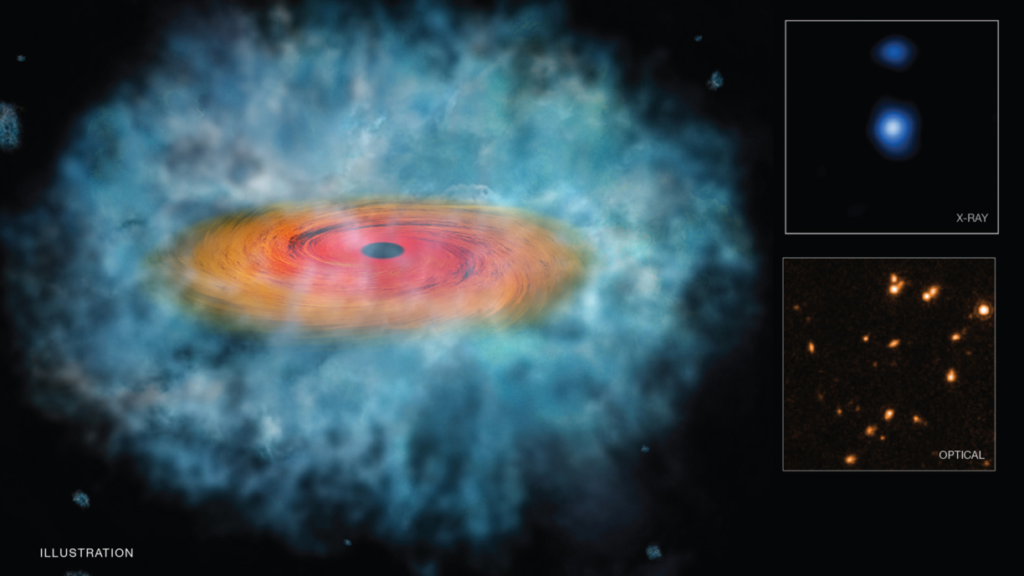It is believed that black holes are formed from ‘black hole seeds’ that grow out of smaller black holes. These seeds then grow by consuming the gas from their surroundings and merging with other small black holes. This process, however, is slow and fails to satisfactorily account for the rapid development of black holes.

Credit: X-ray: NASA/CXC/Scuola Normale Superiore/Pacucci, F. et al, Optical: NASA/STScI; Illustration: NASA/CXC/M.Weiss
Now, an Italian group of scientists has identified two objects in the early universe which could be suitable candidates to be black hole seeds. Seen less than a billion years after the Big Bang, these ‘seeds’ weigh 100,000 times the mass of our Sun. These seeds are formed directly when a massive cloud of gas collapses onto itself, according to new findings.
The Italian team’s new research points towards a theory that black holes start big and proceed to grow at a normal rate instead of starting small and growing rapidly. Although, the two observed candidates for black hole seeds match the theoretical predictions, more research will be necessary to understand their veracious nature.
– M. Kaur
